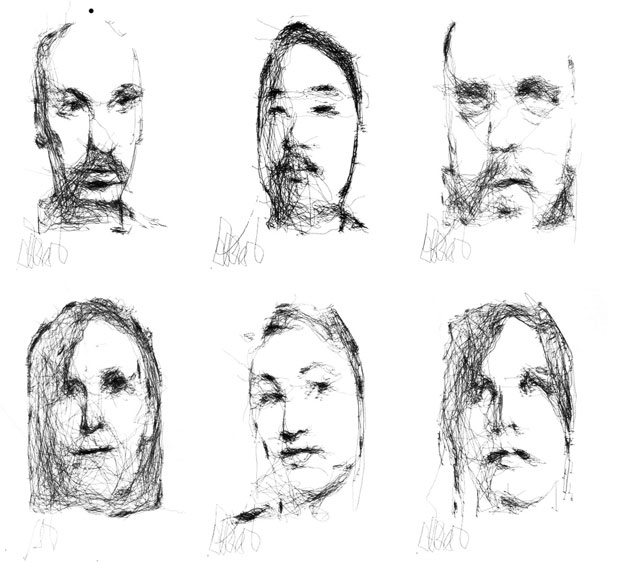automata are self-operating machines, with a long history of design and construction in various cultures, including many different automata that write, draw or paint…
karakuri
karakuri are a type of japanese automata, usually clockwork, popularised in the 17th century by Takeda Omi who opened a theatre circa 1660 in Osaka, presenting various karakuri automata including seated figures that brushed calligraphy...
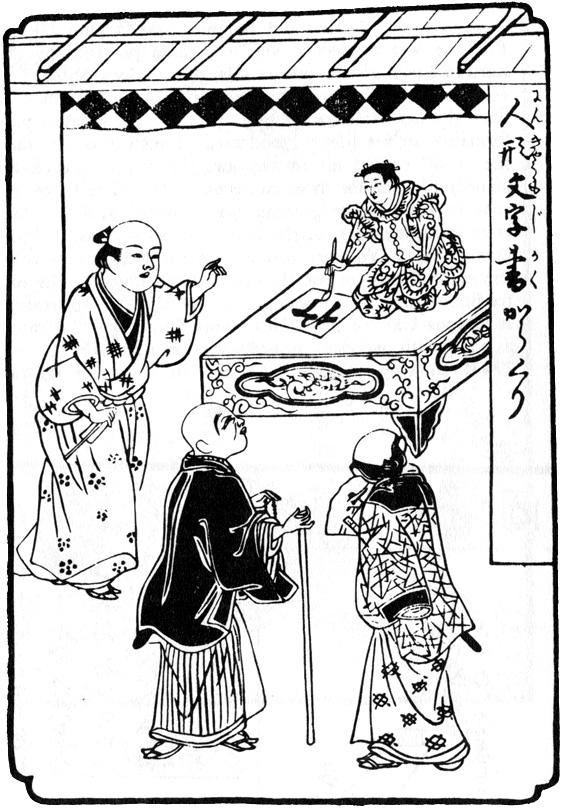
this video by matthew allard explores the work of 21st century karakuri maker hideki higashino, including an automaton calligrapher …
henri maillardet : the writing boy london, circa 1800
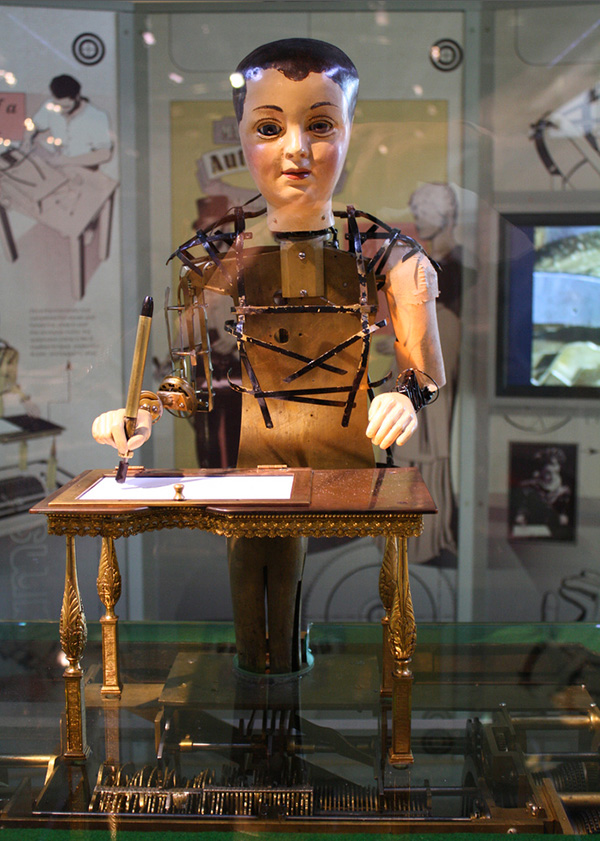
Henri Maillardet (1745-1830), was a Swiss mechanician who worked in London, for a time in the shops of Pierre Jaquet-Droz, who produced watches, clocks, and automata.
In 1805 Maillardet built a remarkable spring-activated automaton that draws seven different pictures and writes verses in French and English. The motions of the drawing hand are controlled by a bewildering series of cams in the base of the automaton.
When first presented to the Franklin Institute in Philadelphia in 1928, the automaton was fire damaged and of unknown origin. Once restored to working order, the automaton identified itself by penning the words "written by the automaton of Maillardet”.
this 7 mins video documents a demonstration of the maillardet automaton at the franklin institute in 2007...
this 40 mins video documents a more technical demonstration to a group of clockmakers and engineers in 2014...
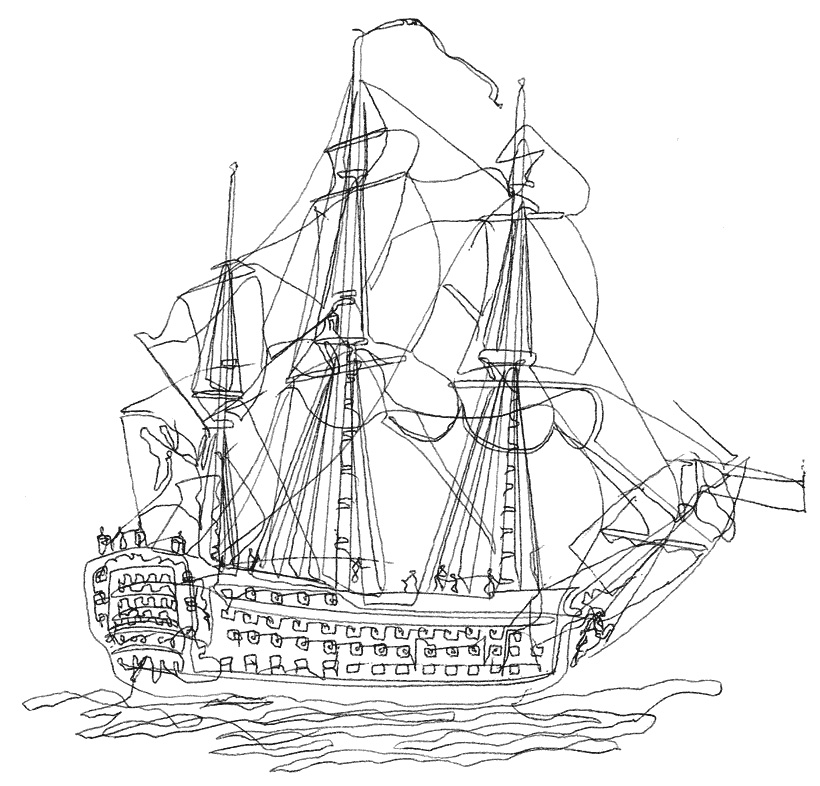
Pierre Jaquet-Droz : the Neuchatel androids Switzerland, 1774
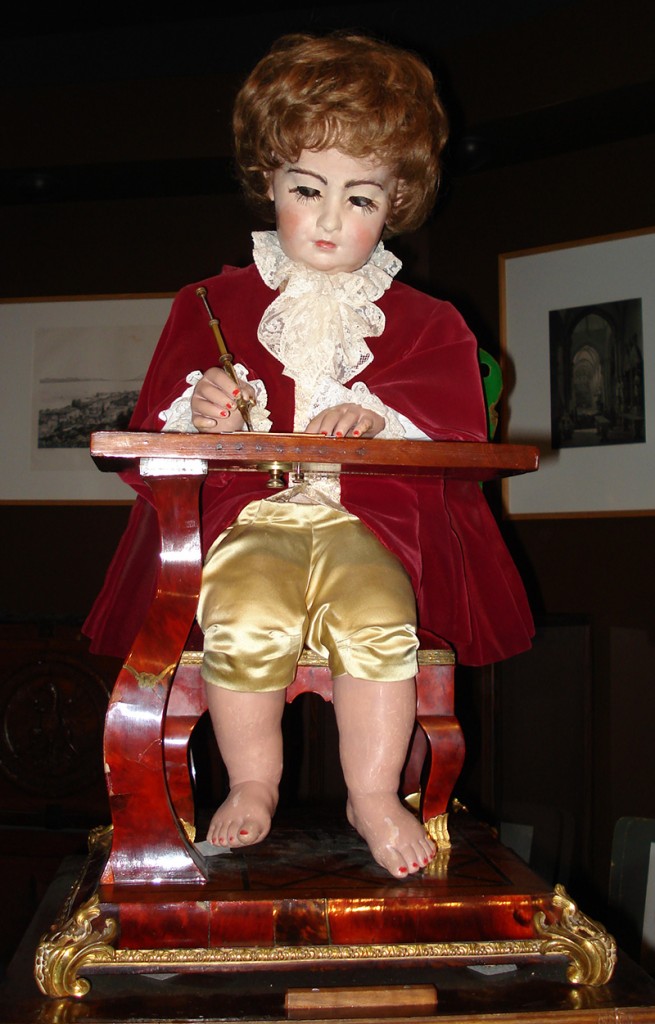
Pierre Jaquet-Droz (1721-1790) was a Swiss-born watchmaker who lived in Paris, London, and Geneva, where he designed and built automata as novel demonstrations of his clock-making skills.
Circa 1775 he and his son constructed a suite of three automata - a writer, musician and draughtsman. These devices are still operating and on display in Switzerland today.
this 11 mins video (spoken in French) documents a public demonstration of the three jaquet-droz automata in 2011...
this 7:30 mins video (spoken in French) documents a more technical demonstration of jaquet-droz's writer automaton in 2011...
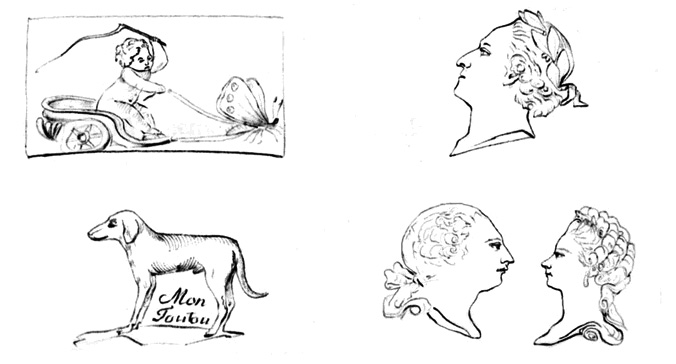
John Nevil Maskelyne : “Zoe” London, 1877
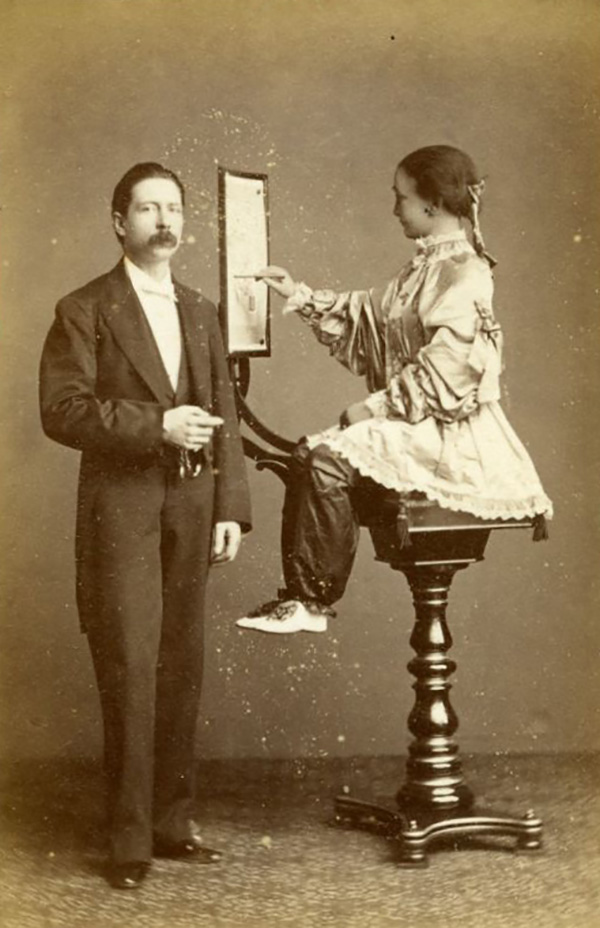
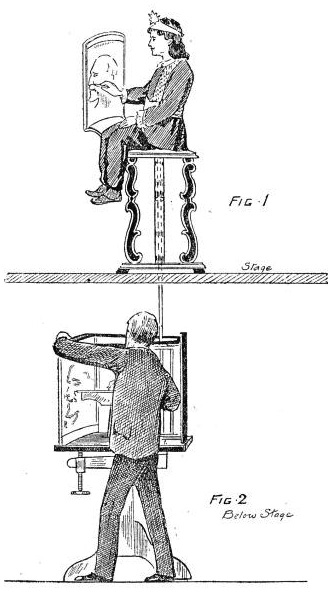
John Nevil Maskelyne (1839 – 1917) was a London stage illusionist, magician and proto-sceptic who had trained as a watchmaker.
Among his many inventions (which included the ‘spend a penny’ pay toilet) was ‘Zoe’, an apparent automaton that drew portraits of well-known people on request.
However, Zoe was not an automaton per se - her drawings were produced by a human operator concealed below the stage whose hand movements were transferred to the articulated mannequin above.
this 7 mins video explores the life and career of john nevil maskelyne (but doesn't mention 'zoe')...
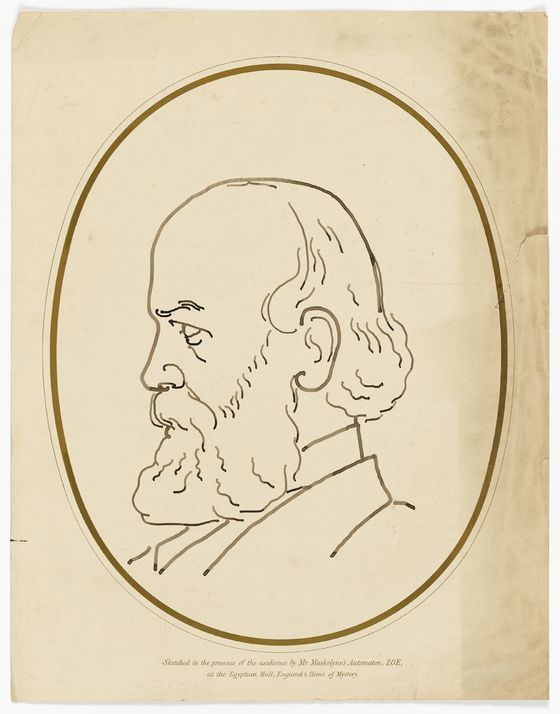
joseph walker / philip vielmetter : mechanical artist toys circa late 19th century
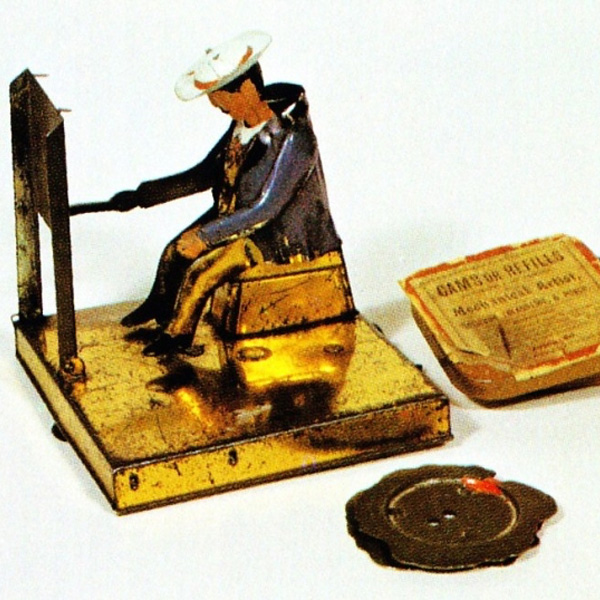
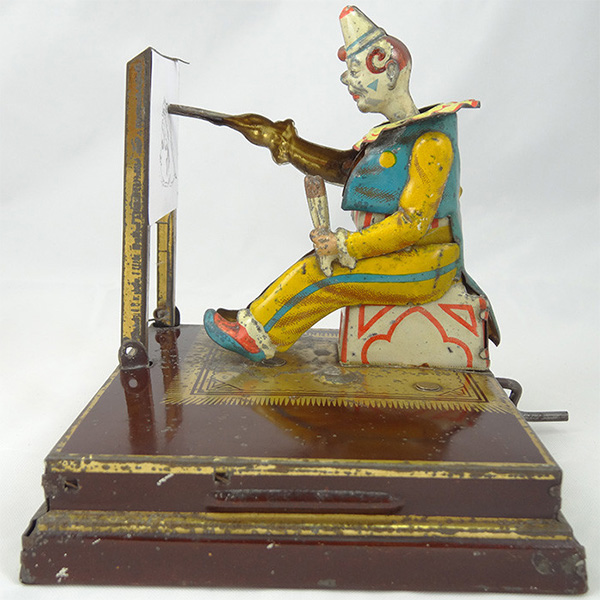
By the late 19th century, windup and hand-cranked mechanisms were being used in pressed metal toys.
Joseph Walker of Birmingham created his mechanical toy artist in 1880, and German manufacturer Philip Vielmetter produced the mechanically identical clown artist from 1895. Both are hand-cranked to produce various drawings depending on which set of notched metal cams is fixed into the toy’s base.
As the cams are interchangeable between the toys, it is believed Vielmetter purchased the rights to the mechanism from Walker.
this 30 second video shows the vielmetter clown artist making a drawing, and this 3 mins annotated video shows the toy being unpacked and operated...
this 30 second video shows the joseph walker toy in operation...
Patrick Tresset : a robot named Paul London 2010
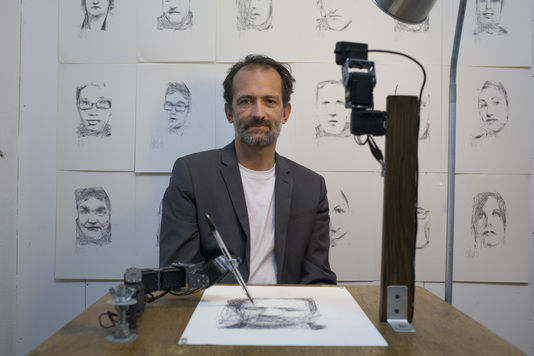
Patrick Tresset is a widely exhibited London based artist who makes installations in which reductive robot automatons make drawings, often portraits of visitors to the exhibition.
Even though the robotic mechanisms making the drawings are clearly machines, their ‘behaviour’ in making the drawings is perceived by viewers as human-like, performed with volition, intent, skill and observation.
this 4:20 mins video by Patrick Tresset documents a 2012 installation for the Tate Modern, where 5 robots named Paul were installed to draw different perspectives of visitor sitters...
